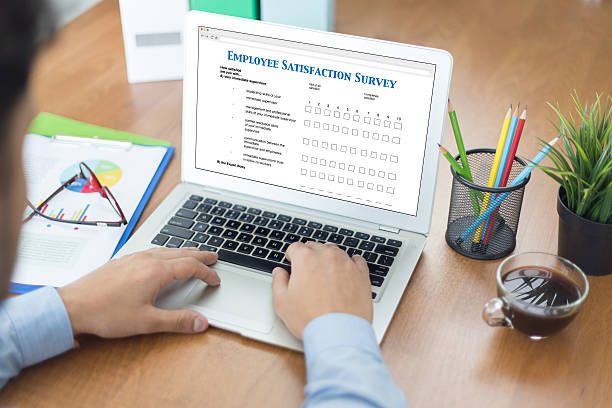Boost morale, gather feedback, and secure growth—all with a simple engagement survey
Introduction

In the corporate arena, the voice of your employees holds undeniable power. Capturing that voice, understanding their concerns, and tailoring your approach can make the difference between a thriving enterprise and a sinking ship. Herein lies the power of an engagement survey. As we embark on this journey, we’ll uncover the nuances of engagement surveys, their significance, and tips for conducting them effectively.
Engagement Survey: The Ultimate Tool for Employee Insight
Employees are more than just a part of a machine. Modern businesses recognize that fostering an atmosphere where employees feel engaged, heard, and valued can drive productivity and innovation. An engagement survey acts as a bridge, connecting the company’s vision with its workforce’s expectations.
Diving into the Core: What is an Engagement Survey?
An engagement survey is a well-structured questionnaire, curated to gauge the level of enthusiasm, dedication, and involvement employees have towards their job and the company they work for. By measuring these parameters, businesses can identify areas of improvement, acting on feedback to foster a more harmonious work environment.
Benefits: Beyond the Buzzword
– Empowerment Through Voice: These surveys offer employees a platform to voice their thoughts, bridging gaps between management and staff.
– Clearer Vision: By gathering first-hand insights, companies can refine their mission and align it more closely with their employees’ values.
– Lower Turnover Rates: Engaged employees stick around. By addressing concerns, companies can increase retention, thereby reducing the costs associated with hiring and training new staff.
Crafting the Perfect Engagement Survey
Creating an engagement survey is an art. While the internet is flooded with generic templates, a truly effective survey must be tailored to fit the company’s unique context.
Question Design: Less is More
While it might be tempting to cram as many questions as possible into your survey, remember that brevity can often lead to clearer insights. Ensure each question is concise, clear, and directly relevant to the aspects you’re trying to measure.
Anonymous vs. Named Surveys
While anonymous surveys might yield more honest feedback, they don’t allow for targeted follow-ups. On the other hand, named surveys can intimidate some employees, causing them to hold back.
Analysing and Acting on the Feedback
Collecting feedback is only half the battle. The real challenge lies in interpreting the data and formulating actionable steps.
Decoding the Numbers
While a simple average score might give a broad overview, delve deeper by segmenting responses. This can unearth patterns, pointing towards systemic issues or departments that might need more attention.
From Feedback to Action
Feedback without action is fruitless. Once you’ve identified areas of concern, collaborate with team leads to formulate plans addressing these issues. Remember, the end goal is a happier, more engaged workforce.

Avoiding Common Pitfalls
The road to a successful engagement survey is fraught with potential missteps.
– Ignoring Negative Feedback: Constructive criticism is a goldmine. Embrace it.
– One Size Doesn’t Fit All: Tailor your surveys to fit your company’s unique context and culture.
– Frequency: Over-surveying can lead to fatigue. Find the right balance.
FAQs
- Why is an engagement survey essential?
An engagement survey is crucial as it offers deep insights into employees’ perceptions, feelings, and concerns, helping businesses refine their strategies to foster a more harmonious work environment.
- How often should you conduct these surveys?
While there’s no one-size-fits-all answer, a good rule of thumb is to conduct major surveys annually and shorter pulse surveys every quarter.
- Can an engagement survey boost productivity?
Absolutely! By addressing employees’ concerns and improving their overall engagement, companies often see a direct positive impact on productivity.
- How long should the survey be?
The length can vary based on the company’s size and objectives. However, it’s crucial to ensure that it remains concise and relevant.
- What should I do if I receive predominantly negative feedback?
View it as an opportunity. Negative feedback offers invaluable insights into areas that need improvement.
- How can we ensure higher participation rates?
Promote the survey’s importance, assure anonymity (if applicable), and consider offering incentives for participation.
Conclusion
In the ever-evolving corporate landscape, understanding and valuing your workforce’s voice is not just good practice—it’s vital. An engagement survey, when crafted and used effectively, can be a powerful tool in a company’s arsenal, paving the way for sustained growth, enhanced productivity, and a happier workforce. Now more than ever, companies must harness the power of these surveys, turning feedback into actionable strategies, and securing a brighter future for both their employees and their enterprise.
External Links/ Sources:
What Is an Employee Engagement Survey? Definition, Process, Vendors, and Examples
